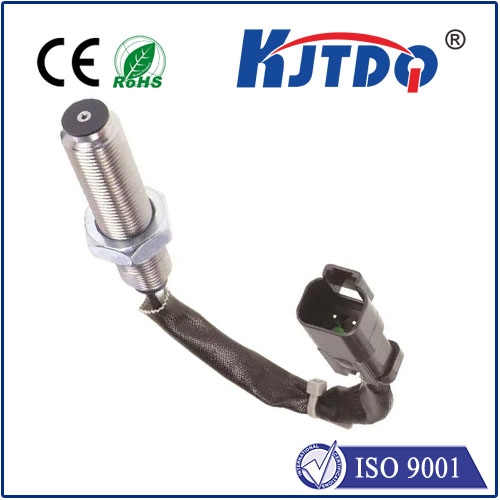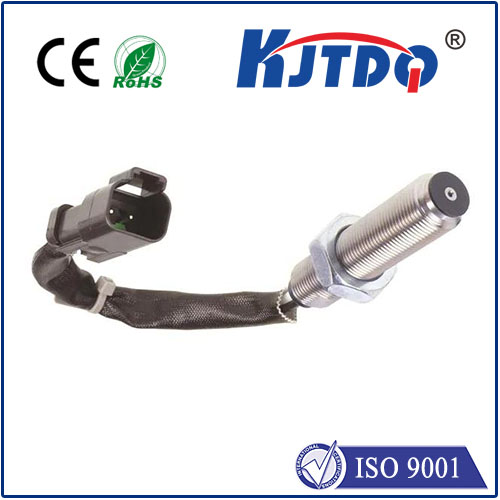Nanjing KJT Electric Co,.LTD
Our main products are proximity sensor, photoelectric sensor,speed sensor,wireless sensor and so on.
KJT's Thrumold Series VRS (Variable Reluctance Speed) sensors are designed to detect engine timing and transmission speed by determining the speed and position of rotating shafts in heavy-duty, off-road, and construction vehicles, providing information to help improve engine combustion process efficiency. These passive VRS sensors are simple, rugged devices that do not require an external voltage source for operation. A permanent magnet in the sensor establishes a fixed magnetic field. The approach and passing of a ferrous metal target near the sensor's pole piece (sensing area) changes the flux of the magnetic field, dynamically changing its strength. This change in magnetic field strength induces a current into a coil winding which is attached to the output terminals. The output signal of a VRS sensor is an ac voltage that varies in amplitude and frequency as the speed of the monitored device changes, and is usually expressed in peak to peak voltage (Vp-p). One complete cycle occurs as each tooth passes the sensor's pole piece. If a standard gear were used as a target, this output signal would resemble a sine wave if viewed on an oscilloscope.
FEATURES • Configurable diameters, materials, and output voltages: A variety of package styles, housing diameters, materials and and output voltages • Compensated operating temperature range: -40 °C to 150 °C [-40 °F to 302 °F] • Energy efficient: When used in engine camshaft and crankshaft applications, can provide a precise engine timing signal to optimize the combustion process • No moving parts or wear mechanisms (unlike mechanical switches) • Self-powered operation: Can be used in applications where no external power is available • Direct conversion of actuator speed to output frequency: Simplifies the customer's electronic control interface because each output signal correlates to each tooth on the actuator • Simple installation: Screw-in mount sensor requires no special tools • Designed for use over a wide range of speeds: Allows for potential use in engines and transmissions which often require a wide range of rotational speed measurement • Durable: 300 Series stainless steel housing material allows for use in harsh environments • Environmentally tough: - Chemical compatibility: Engine oil, diesel fuel, water, engine coolant, salt spray and trisodium phosphate cleaning solution (oils containing extreme pressure additives are not suitable for use with this sensor) - Front end sealed to 5 psi • Sensor reach options: Sensor reach is the distance from a sensor's mounting surface to its sensing tip: - Adjustable: The sensor, with its threaded housing, is screwed into the application until it makes contact with the target, and then is backed off one-half to one turn; a userprovided jam nut is then used to fix the sensor in place - Fixed (also called non-adjustable): The sensor is screwed into the application until the sensor's mounting surface makes contact with the application's mounting surface POTENTIAL TRANSPORTATION APPLICATIONS • Engine timing for heavy duty, off-road, construction vehicles (i.e., tractors and dump trucks) • Transmission speed for heavy duty, off-road, construction vehicles (i.e., tractors and dump trucks)




Copyright © 2025 Nanjing KJT Electric CO.,LTD | All Rights Reserved Design
Hello, please leave your name and email here before chat online so that we won't miss your message and contact you smoothly.